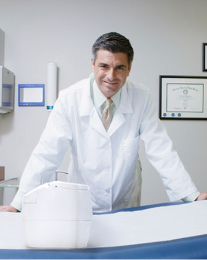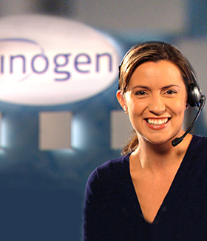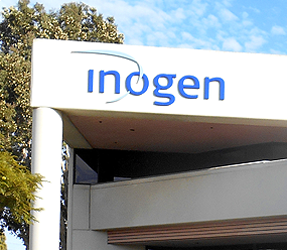Hyperbaric oxygen therapy (HBOT) is a treatment that involves breathing 100% oxygen in a chamber or special room that has a higher than normal atmospheric pressure. Not only is it a well-established treatment for decompression sickness (a hazard of scuba diving), but it’s also used to treat other conditions, including serious infections, bubbles of air in the blood vessels and slow-healing wounds as a result of diabetes or radiation injury.[1]
How Does Hyperbaric Oxygen Therapy Work?
The air pressure in a hyperbaric oxygen therapy chamber is increased to two to three times the normal air pressure while you breathe 100% pure oxygen. This helps your lungs take up more oxygen than would be possible breathing 100% oxygen at normal air pressure. Once your blood is fully oxygenated, it’s carried throughout your body to help fight bacteria and stimulate the release of growth factors and stem cells, substances produced by the body that promote healing.[1]
Which Conditions Are Treated with Hyperbaric Oxygen Therapy?
Hyperbaric oxygen therapy is used to treat a number of health conditions including:
- Severe anemia
- Brain abscess
- Arterial gas embolism (bubbles of air in your blood vessels)
- Burn injuries
- Decompression sickness
- Carbon monoxide poisoning
- Crush injuries
- Sudden deafness
- Gangrene of the tissues
- Infection of skin and/or bone that causes necrosis (tissue death)
- Skin graft or skin flap at risk for tissue death
- Sudden and painless vision loss
At this time, there is insufficient scientific evidence to support claims that hyperbaric oxygen therapy effectively treats: HIV/Aids, allergies, Alzheimer’s disease, arthritis, asthma, autism, Bell’s palsy, brain injury, cancer, cerebral palsy, chronic fatigue syndrome, cirrhosis, depression, fibromyalgia, gastrointestinal ulcers, heart disease, heat stroke, hepatitis, migraine headaches, multiple sclerosis, Parkinson’s disease, spinal cord injury, sports injury and stroke.[2]
Risks of Hyperbaric Oxygen Therapy [1]
Although hyperbaric oxygen therapy is generally safe and effective, potential risks that may occur include:
- Middle ear injuries such as leaking fluid and ruptured eardrum caused by increased air pressure.
- Temporary nearsightedness caused by changes in the lens of the eye.
- Lung collapse caused by pressure changes in the air.
- Seizures as a result of oxygen toxicity (too much oxygen to the central nervous system).
- Lowered blood sugar in people who have diabetes treated with insulin
- Fire (due to the oxygen-rich environment of the treatment room or chamber).
Preparing for Treatment [1]
The Hyperbaric Center where you’ll receive treatment will give you specific instructions on how to prepare for your treatment sessions; however, to follow are some general tips to get you started:
- Because the hyperbaric chamber operates under higher than normal air pressure, you’re likely to experience pressure build-up in your ears much like you’d experience when flying in an airplane. Yawning, chewing gum and swallowing are all effective ways of equalizing. Practice equalizing before you visit the center to avoid excessive ear pain during treatment.
- Avoid using products containing petroleum (such as Vaseline) on the day of your therapy session.
- Do not wear any grease or oils such as body lotions, lipstick or makeup, hair products, perfumes or colognes prior to treatment. In addition, avoid skin care products or deodorant that contain alcohol.
- Remove watches, jewelry, wigs, prostheses, wire-rimmed glasses and hearing aids before your treatment.
- Smoking and caffeine constricts blood vessels making hyperbaric oxygen therapy less effective. If possible, don’t smoke or drink caffeinated beverages during the entire duration of your treatment. If this isn’t possible, avoidance of these substances for as long as possible before and after treatment is highly recommended.
- Have a light, nutritious meal 1 to 2 hours before your treatment.
- Until you learn how your body responds to treatment, have a driver accompany you to your first few treatments in case you experience fatigue.
- Notify the center if you experience a fever or signs of infection such as a cough, runny nose, body aches, nausea, vomiting, or diarrhea on the day of your treatment. If you’re sick, you may have difficulty equalizing ear pressures which may result in discomfort or possible injury to your eardrums.
What to Expect During and After Treatment [1]
Hyperbaric oxygen therapy is generally performed on an outpatient basis, unless you are already hospitalized. The number of sessions you’ll receive depends upon what you’re being treated for, but more than likely, you’ll need more than one session.
Your treatment will be performed in one of two settings: in an individual unit where you’ll lie down on a table that slides into a clear plastic chamber or, in a multi-person hyperbaric oxygen room where you’ll either sit or lie down while breathing oxygen through a mask or clear hood that’s placed over your face.
During your treatment, the air pressure in the chamber or room will be increased to up to three times the normal air pressure. This may cause you to feel a sense of fullness in your ears that can be relieved (equalized) by yarning or swallowing.
Most treatments last about 2 hours during which time you’ll be monitored by members of your health care team. After your treatment, you may feel tired or hungry, but you should be able to resume normal activities.
Another type of oxygen therapy is portable oxygen therapy used to treat respiratory disease.
SOURCES
- Hyperbaric oxygen therapy – Mayo Clinic “Hyperbaric Oxygen Therapy.” November 25, 2015.
- Despite New Research, Scientists Want More Proof That Hyperbaric Oxygen Treats Alzheimer’s (forbes.com)
By Deborah Leader RN, BSN, PHN












